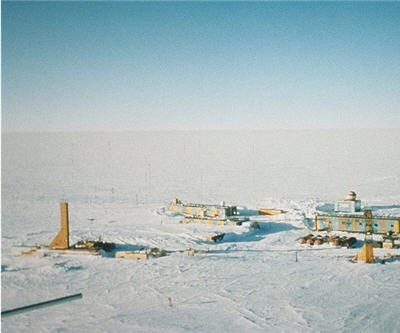
Russian scientists, working 24-hours a day in extreme Antarctic conditions, broke through four-kilometres of ice on Monday to reach Lake Vostok, a body of water that has been covered by ice for over 20 million years.
The lake is a like a time capsule, undisturbed since it was first frozen over.
Scientists have been working around the clock to break through the ice before the Antarctic winter takes hold, making further work impossible. Vostok Station recorded the earth’s coldest temperature, -89 celcius in 1983.
Lake Vostok is large, equivalent in size to Lake Ontario. Despite the Antarctic cold, the lake has not frozen due to the geothermal activity, high pressure due to the pressure of the ice above which prevents freezing, and insulation from the ice sheet above.
Any life in the lake will have to have evolved to cope with extreme conditions, totally dark but living in water that is rich in trapped oxygen.
The Russian scientists have been criticized for their drilling techniques. An estimated 60 tons of chemicals such as kerosene and freon have been used to prevent the drill hole from collapsing. The scientists say that precautions were taken before the lake was breached so the equipment doesn’t contaminate the lake.
Andrey Kapitsa first therorized the existence of the lake in late ’50s after using seismic soundings of the region around Vostok Station.
Lake samples will be collected in late 2012, when the new Antarctic summer season starts.
Photo of Vostok Station from U.S. National Oceanic and Atmospheric Administration.
Comments
smellygoatllama
very nice but what are they after?